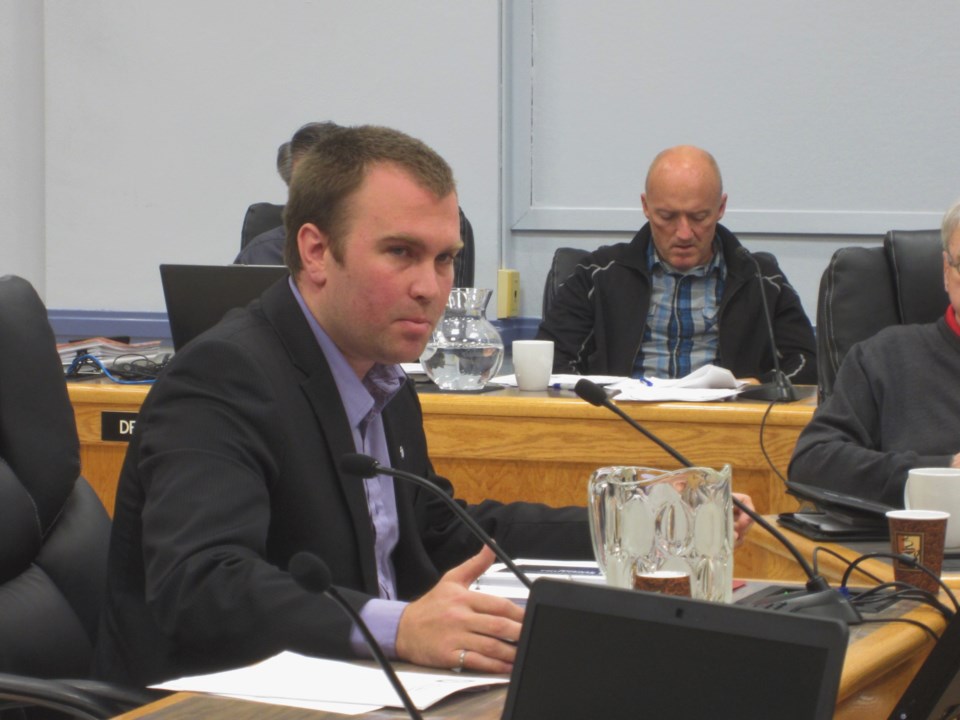Frustration at the lack of progress in changes to the region's social services funding model prompted Mayor Steve Black to present a resolution at city hall Monday night.
He says the current model is costing the taxpayers of Timmins an unfair amount of money, and feels that the city should not be forced to continue to subsidize the region's smaller communities.
Black's stance has irked some of the other communities' leadership, who feel that as the biggest municipality in the area, Timmins should be responsible for a little extra.
Formed in 1999 by provincial legislation, the Cochrane District Social Services Administration Board is responsible for social housing, Ontario Works, and Children's Services in the Northeast region. EMS services, paramedics and ambulances, was added in 2001 to the portfolio.
Black says the current funding model was never actually agreed upon by the municipalities, it was forced on them by the province.
He presented a series of interesting facts and statistics, which said that Timmins now pays 21 percent more for DSSAB services than it did in 1999. Cochrane pays 40 percent more than it did in 1999.
Black made a presentation to the CDSSAB in November of 2015 proposing a change in funding. At that meeting, several of the smaller communities pushed for 24-hour a day EMS capabilities, which they currently do not have, but is implemented in Timmins and Kapuskasing.
"I fully support the other communities having 24-hour EMS, as long as they're willing to pay their share of the cost of services," said Black.
He pointed out one of his new funding proposals, which Black called a 'hybrid' would have seen four additional paramedics stationed in communities such as Cochrane and Smooth Rock Falls, which comes at a cost of $220,000 annually to the DSSAB budget, for an additional $37,000 contribution Smooth Rock Falls, who was not supportive of the plan.
"I really struggle when communities come to the NEOMA meetings, and they come to the DSSAB meetings, and they say 'We should have the same services anyone else in the district, we should have the same EMS, the same paramedics as all the other communities', but when you put something on the table, and they're not even willing to pay more than $37,000," said Black.
He also pointed out how he feels Kapuskasing is not paying its fair share, for the percentage of overall services it receives. According to Black's data, Kapuskasing is paying 82 percent less than it should be.
"If you look at what the cost of providing the number of housing units is in Kapuskasing, is less than their total DSSAB bill. So essentially, they get free EMS, child care, and Ontario Works services, because they don't even pay their fair share of the number of housing units in Kapuskasing."
When Black added up paramedics, housing, child services, and Ontario Works, Timmins pays $1,967,438 dollars more than its proportional share of municipal costs.
"In my opinion, Timmins taxpayers cannot afford to give this kind of transfer payment to other municipalities, nor do I believe any municipality in the province of Ontario was set up to to transfer payments to other municipalites. That's a provincial responsibility if they feel the need to step in and subsidize" he said.
Black presented three options for consideration by council, then ultimately the Ontario government.
1) The provincial government provide an increase in OMPF (Ontario Municipal Partnership Fund) to cover Timmins' overpayment, $1.97 million dollars.
2) The provincial government legislates a funding model which would see a proportionate cost to services received scenario.
3) The provinicial government allows Timmins to withdraw from the Cochrane DSSAB, and manage its own services, like Greater Sudbury currently does.
Councillor Andrew Marks generally agreed with Black's sentiment, and added 'we pay more than our fair share'. Councillor Mike Doody, who is the current President of the North Eastern Ontario Municipalities Association (NEOMA), voiced his displeasure at Black's motion.
Council voted to move ahead with Black's motion, and documentation will be sent to the provincial government. Council will await a response in the coming months. The motion aims to have an resolution by the end of 2016.



